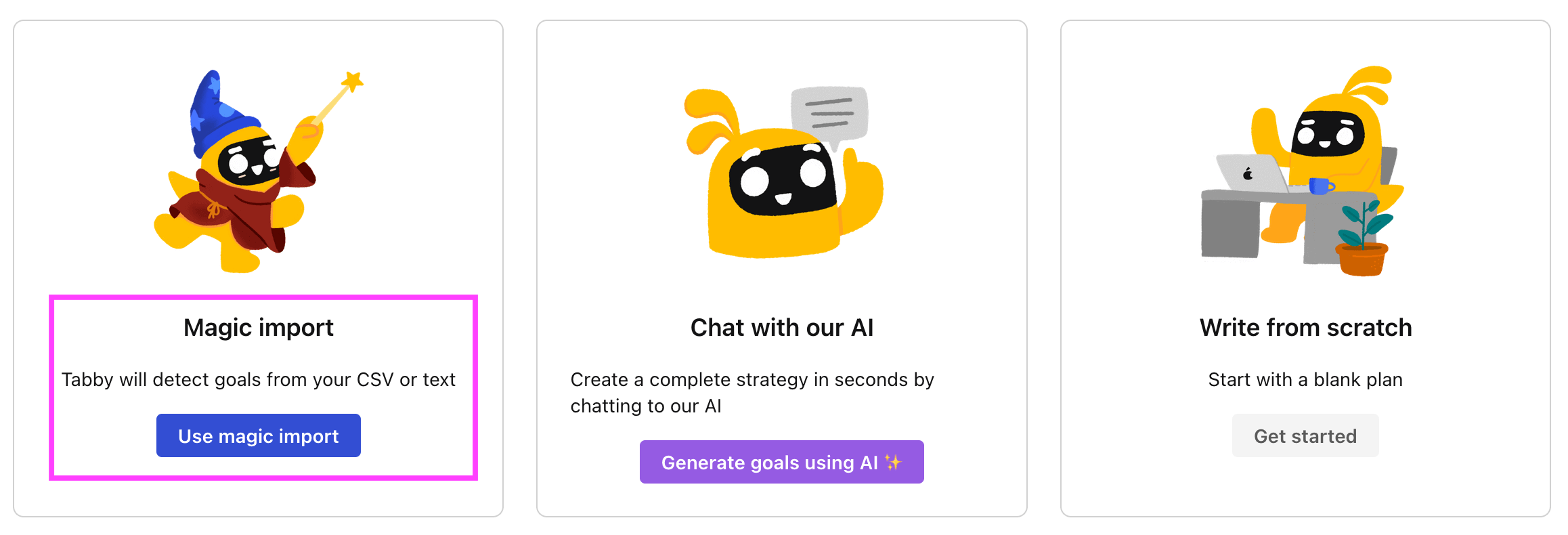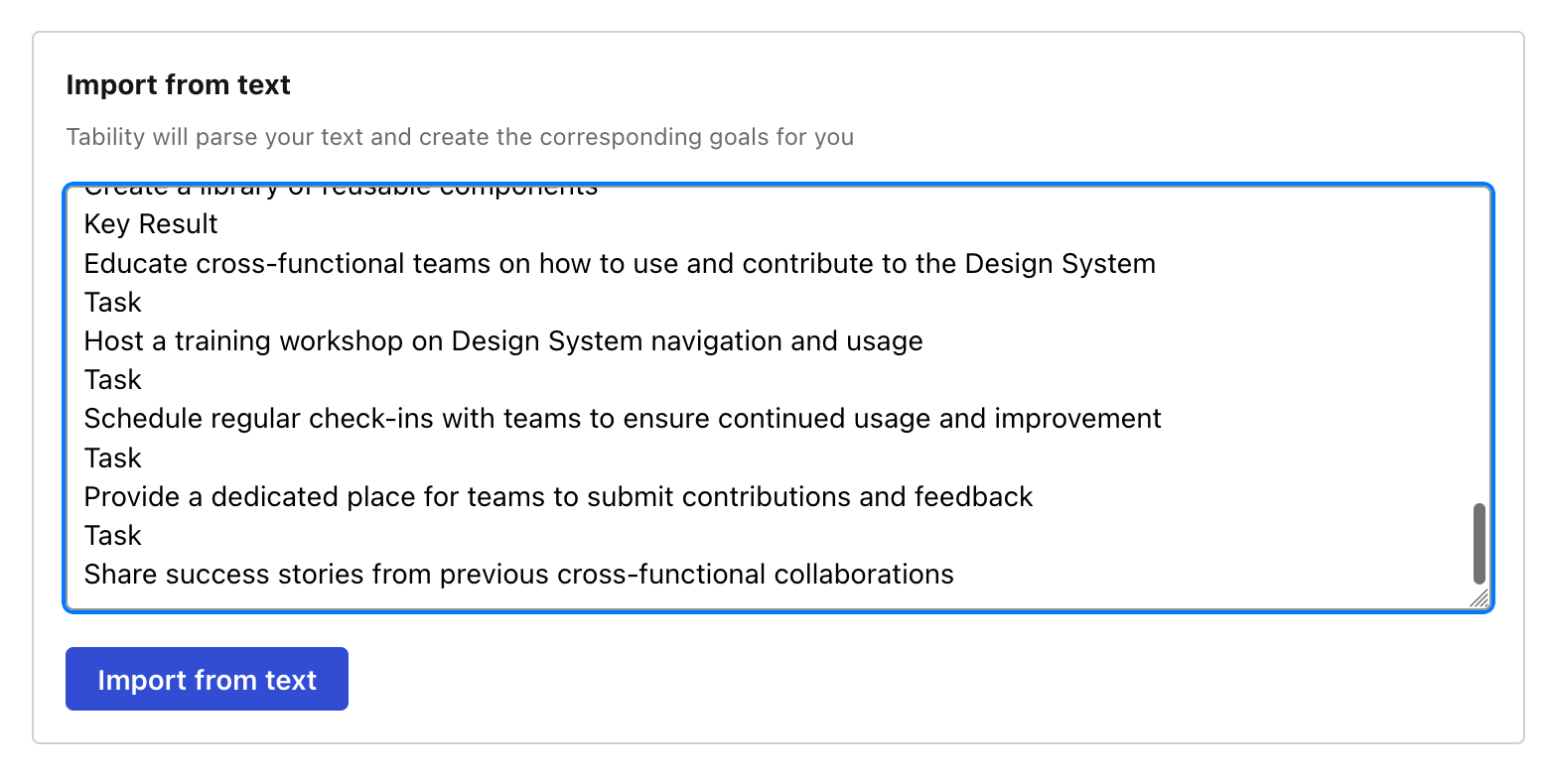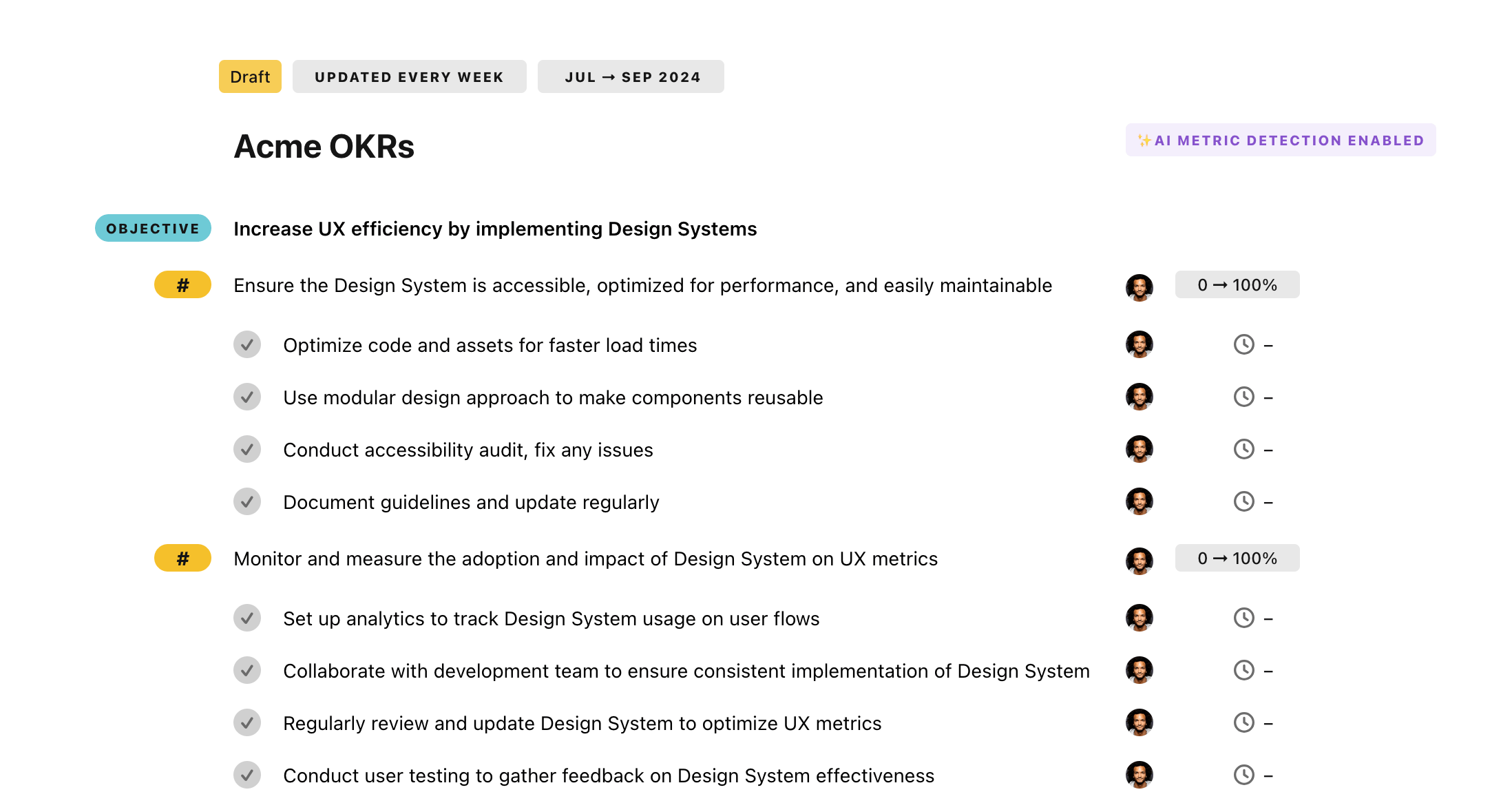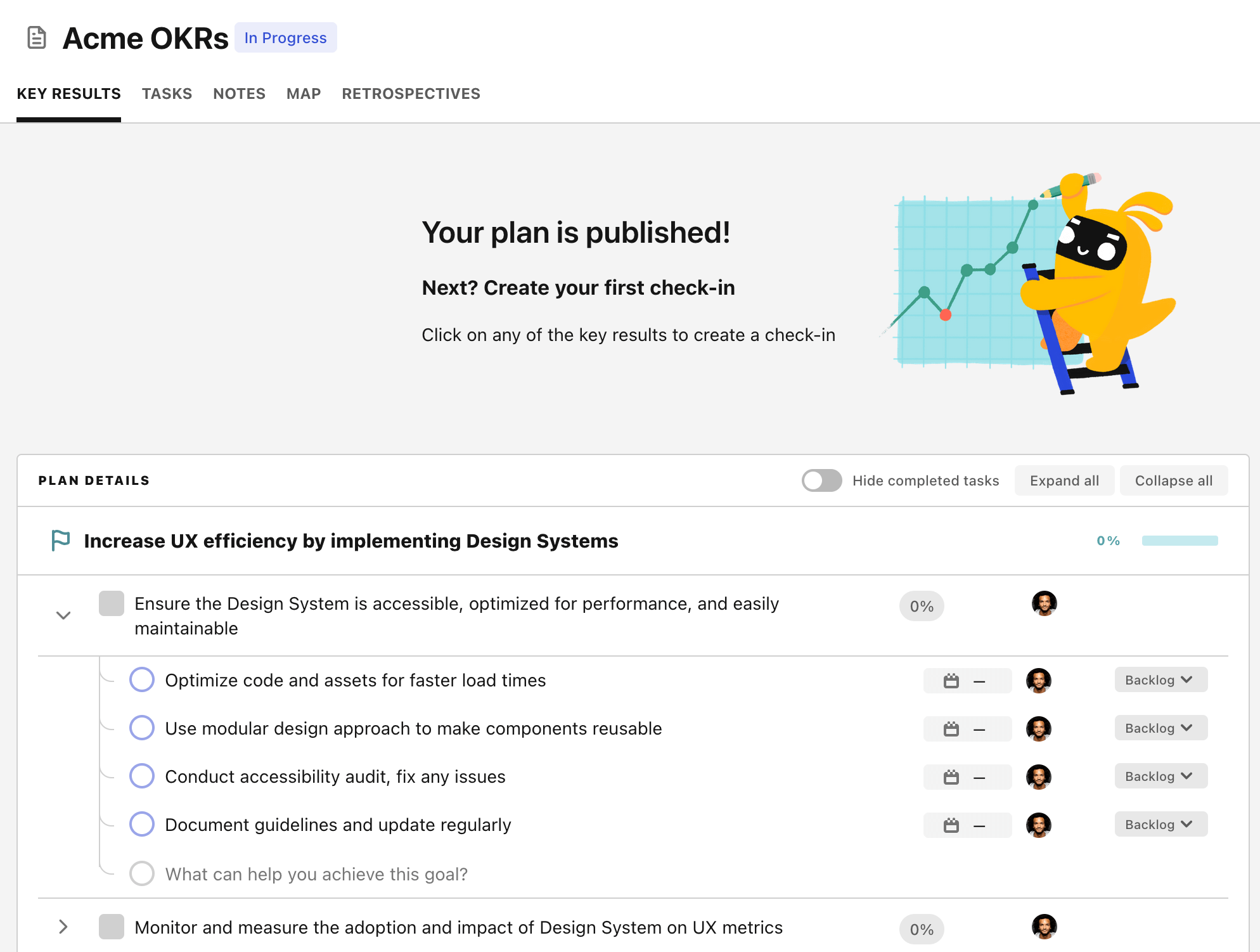OKR template to enhance verbal communication and active listening skills
Your OKR template
The second objective centers on attending two comprehensive communication and active listening workshops. The initiatives to achieve this involve researching and registering for workshops, arranging time to attend, and preparing by completing pre-workshop assignments.
The final objective is delivering clear and engaging presentations. To fulfill this, the individual will practice presenting, collect, and analyze feedback, and prepare five 10 presentations on chosen subjects.
By practicing in private and professional settings, the person will utilize active listening, improve verbal communication, and empower themselves for future tasks by fully engaging in these workshops and presentations.
ObjectiveEnhance verbal communication and active listening skills
KRPractice active listening with 10 different conversations weekly
Schedule 10 distinct meetings or phone calls weekly
Apply active listening techniques in each discussion
Keep a journal recording progress after each conversation
KRAttend two comprehensive communication and active listening workshops
Research and sign up for two communication and active listening workshops
Schedule time off work to attend the workshops
Complete and review any pre-workshop materials
KRDeliver five 10-minute presentations and receive positive feedback
Practice presenting to ensure clarity and engagement
Gather and analyze received feedback for improvement
Prepare five 10-minute presentations on chosen subjects
How to edit and track OKRs with Tability
You'll probably want to edit the examples in this post, and Tability is the perfect tool for it.
Tability is an AI-powered platform that helps teams set better goals, monitor execution, and get help to achieve their objectives faster.
With Tability you can:
- Use AI to draft a complete set of OKRs in seconds
- Connect your OKRs and team goals to your project
- Automate reporting with integrations and built-in dashboard
Instead of having to copy the content of the OKR examples in a doc or spreadsheet, you can use Tability’s magic importer to start using any of the examples in this page.
The import process can be done in seconds, allowing you to edit OKRs directly in a platform that knows how to manage and track goals.
Step 1. Sign up for a free Tability account
Go tohttps://tability.app/signup and create your account (it's free!)
Step 2. Create a plan
Follow the steps after your onboarding to create your first plan, you should get to a page that looks like the picture below.

Step 3. Use the magic importer
Click on Use magic import to open up the Magic Import modal.
Now, go back to the OKR examples, and click on Copy on the example that you’d like to use.

Paste the content in the text import section. Don’t worry about the formatting, Tability’s AI will be able to parse it!

Now, just click on Import from text and let the magic happen.

Once your example is in the plan editor, you will be able to:
- Edit the objectives, key results, and tasks
- Click on the target 0 → 100% to set better target
- Use the tips and the AI to refine your goals
Step 4. Publish your plan
Once you’re done editing, you can publish your plan to switch to the goal-tracking mode.

From there you will have access to all the features that will help you and your team save hours with OKR reporting.
- 10+ built-in dashboards to visualise progress on your goals
- Weekly reminders, data connectors, and smart notifications
- 9 views to map OKRs to strategic projects
- Strategy map to align teams at scale